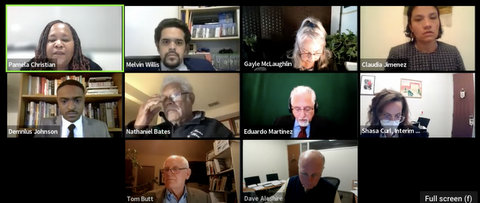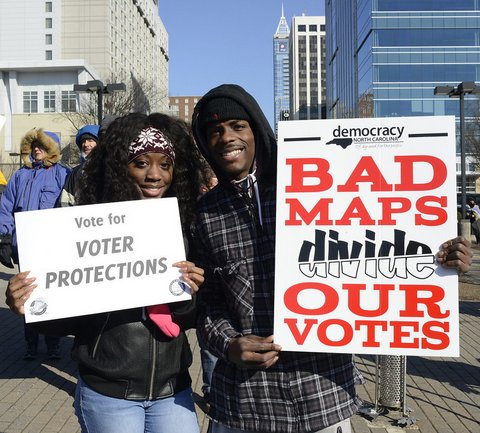
02 Feb Debate Continues Over Electoral Redistricting in Richmond

By Julia Métraux
The Richmond City Council held its second public redistricting hearing, showing proposed maps, Tuesday night. Tension among members of the Richmond community over which maps would better serve the public was very high.
Public commenters called into the meeting with their thoughts on four maps, designated 102c, 102d, 102e and 201. Map 102 was recalled and redesigned after the last meeting due to concerns from the North & East Neighborhood Council, and versions of map 102 were created by 11 neighborhood councils.
Before the meeting, council member Melvin Willis asked Shalice Tilton, a senior consultant at National Demographics Corporation, how many Richmond residents would be skipped over in the next council elections. That is, for example, how many people who voted in 2020 wouldn’t be able to vote until 2026, rather than 2024, due to redistricting?
Under maps 102c, 102d and 102e, over 6,000 voters would have to wait two more years to be able to vote in city council elections. For map 201, no voters would be deferred.
Members of the public argued over what was more important: reuniting fractured communities that would be put together again in 102 or voting disenfranchisement.
“I am very concerned that map 102, in particular, any version would actually disenfranchise thousands of voters,” said Marisol Cantú, an adjunct professor at Contra Costa College and Richmond resident. “I’m concerned about neighborhood councils that have been exclusionary, that have been primarily racist, and have been generally small in their meetings [with] six to 10 people.”
Some members of the Neighborhood Coalition Council, which created the different versions of map 102, said keeping neighborhoods together should be a priority.
“[One thing] we talked about in the beginning … before we started doing redistricting,” Linda Whitmore said, “was that you were going to really work hard to make sure the neighborhoods were not separated again.”
A few commenters said the current map that Richmond used was created by Mike Parker. This drew the ire of other community members and council member Willis, in part because Parker recently died.
Parker did create a map, but the City Council did not adopt it.
“He felt that it was important that every council member, every candidate and every district, as much as humanly possible, should have access and responsibility for the shoreline,” Willis said, referring to Parker’s proposed map.
Willis continued, voicing his disdain for district elections in the city.
“I voted against or abstain from district elections when this first came up for the same reason that I have right now,” he said. “It has splintered our frickin’ community in the worst way possible.”
Willis fell out of his chair and his video briefly went offline during his impassioned speech.
The deadline to submit revised versions of previously submitted maps was Jan. 21, but the Neighborhood Coalition Council did not submit its revisions until Jan 31. This raised concerns that members of the public and City Council did not have sufficient time to review them.
“I made a decision to move forward just in the interest of … inclusivity, and so that we didn’t deny anyone their voice to have input on maps,” Tilton said, explaining why the late maps were presented at the meeting.
Council member Gayle McLaughlin said not all members of the Richmond community were aware they could submit revised maps just up to a day before the meeting. She introduced a substitute motion that would allow people to still submit revised versions of previously submitted maps for the council to consider.
The motion passed 5-2, with Mayor Tom Butt and council member-at-large Nathaniel Bates voting no. The deadline to adopt a new electoral map is April 17.





No Comments